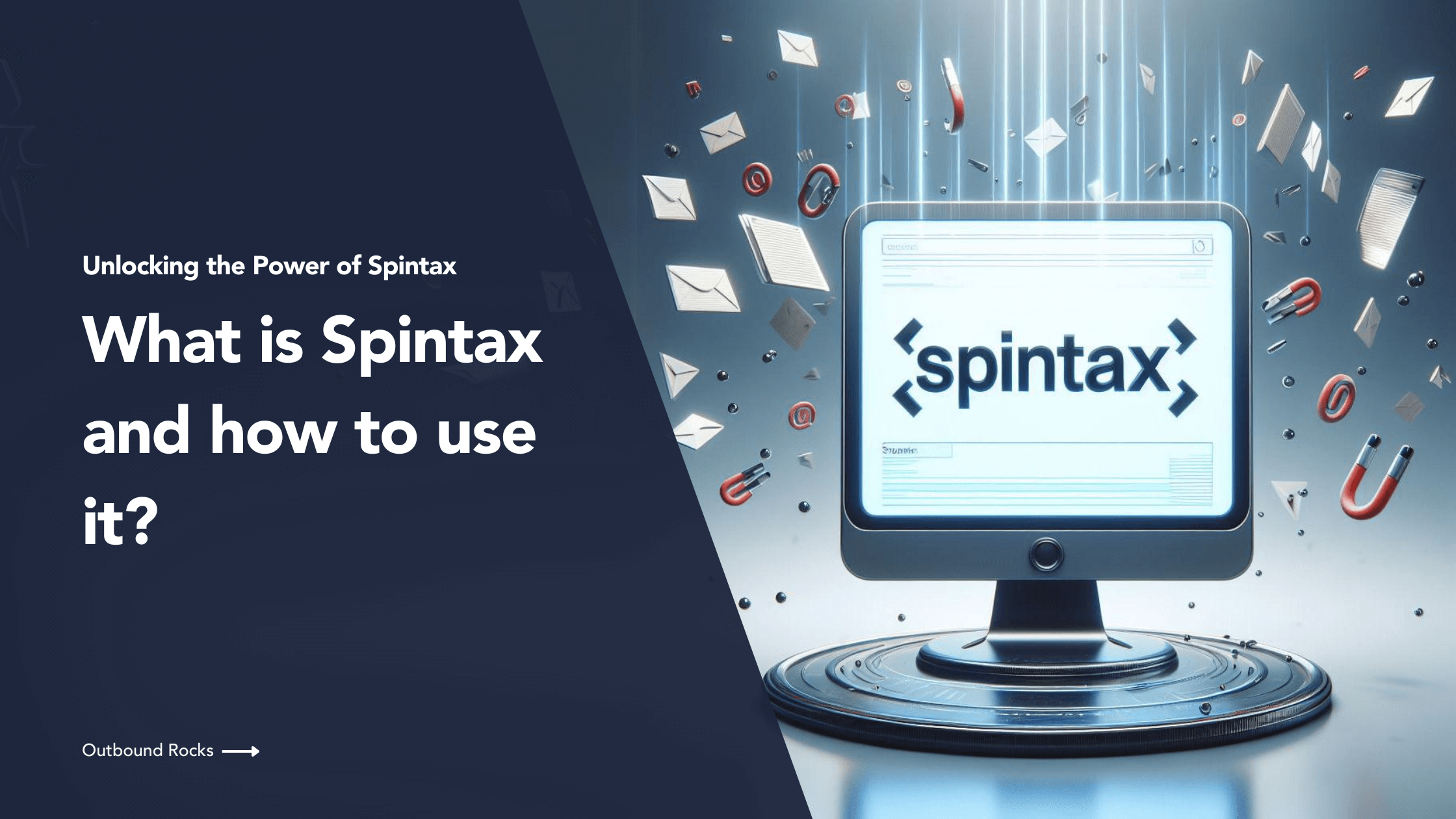Have you ever wanted to create variations of the same content quickly and easily?
Spintax could be the answer you’re looking for.
In this article, we will explore what Spintax is, how it works, and how you can use it for your own purposes.
Read on to learn how you can make your emails more unique, improve deliverability, and avoid spam filters by randomizing the content of your emails to your prospects.
TABLE OF CONTENTS
– What is Spintax?
– How to use Spintax in cold emails?
– Basic spintax templates
What is Spintax?
Spintax, short for “spinning syntax,” is an email marketing technique used to increase deliverability and avoid spam categorization.
The mail goal is to create the illusion of sending personalized emails to individual recipients rather than a mass email to a large audience.
This is achieved by using variations in the call-to-action (CTA) or text content through a dynamic and interchangeable format.
The idea behind Spintax is to send “different” versions of the same message, making it appear as if you are reaching different people with unique content.
How to use it in cold emails?
Using spintax in cold emails involves incorporating dynamic variations into your email content to create a sense of personalization and improve deliverability.
Here’s a step-by-step guide on how to effectively use spintax in cold emails:
1. Craft your base message
Start by composing your cold email with the main message, including the key elements such as the introduction, value proposition, and call-to-action (CTA). This serves as the foundation for your spintax variations.
2. Identify variable elements
Identify parts of your email that can be varied without changing the overall message. This often includes elements like the CTA, product/service benefits, or even the way you express certain ideas.
3. Format spintax
Use curly braces {} to enclose alternative options, and separate each option with a vertical bar |. For example:
{Hey [First Name], | Greetings, | Hello [First Name],}
In this case, the spintax will randomly select one of the options enclosed in braces when sending the email.
4. Personalize using spintax
Insert spintax into your email template where you want variability. For instance, you might use it in the CTA, like this:
{Let's schedule a call to discuss further| Are you available for a quick chat tomorrow? | Would you be interested in a demo?}
When the email is sent, one of these options will be randomly chosen, providing a personalized touch to each email.
5. Test and optimize
Before launching a full-scale cold email campaign, test your spintax variations on a smaller scale to ensure they appear as intended and effectively gauge recipient responses.
6. Track performance
Monitor the performance of your spintax variations by tracking metrics such as open rates, click-through rates, and conversion rates. This analysis will help you identify which variations resonate better with your audience.
7. Iterate based on results
Based on the performance data, iterate and refine your spintax options to continuously improve the effectiveness of your cold emails. You can drop less successful variations and introduce new ones to optimize engagement.
8. Comply with regulations
Ensure that your spintax usage complies with email marketing regulations such as CAN-SPAM or GDPR. Avoid deceptive practices or attempts to mislead recipients, as this can lead to legal issues and damage your sender reputation.
Basic Spintax templates you can use in your emails
Finally, here are some basic spintax templates that you can use for different elements of your emails, including greetings, intros, and sign-offs:
| Type | Spintax | Example |
| Greetings | {Hi [First Name], | Hello [First Name], | Greetings [First Name]} | For example: – Hi John, – Hello John, – Greetings John, |
| Introductions | {I hope this email finds you well. | Trust this message reaches you in good health. | Hoping you’re having a great day} | Example: – I hope this email finds you well. – Trust this message reaches you in good health. – Hoping you’re having a great day. |
| Body content variation | {I wanted to discuss | I’m reaching out to talk about | Let’s explore} the opportunity to {collaborate on | work together for | discuss} | Example: – I wanted to discuss the opportunity to collaborate on… – I’m reaching out to talk about working together for… – Let’s explore the opportunity to discuss… |
| Call-to-Action (CTA) | {Let’s schedule a call to discuss further. | Are you available for a quick chat tomorrow? | Would you be interested in a demo?} | Example: – Let’s schedule a call to discuss further. – Are you available for a quick chat tomorrow? – Would you be interested in a demo? |
| Sign-offs | {Best regards, | Sincerely, | Regards} | Example: – Best regards, – Sincerely, – Regards, |
Feel free to customize these templates to suit your specific needs and brand voice.
If you want a tool that can automate all of this for you, visit Outbound Rocks, fill out the form and try our demo for free!
